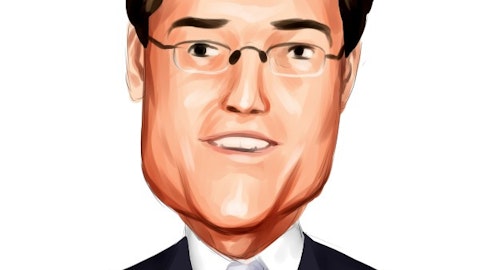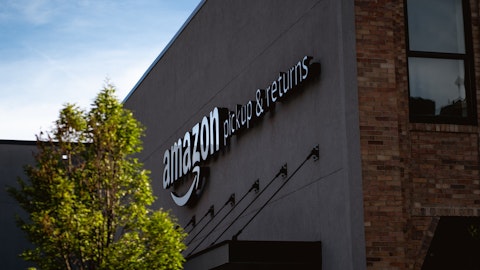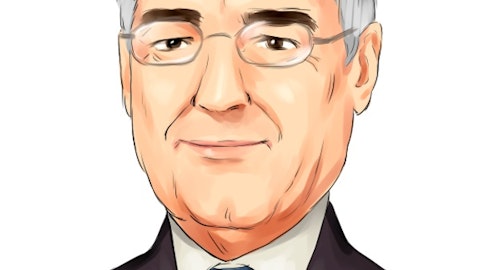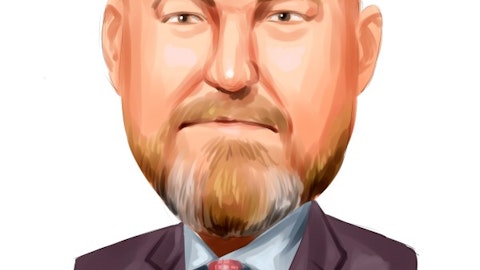Central Garden & Pet Company (NASDAQ:CENT) Q4 2022 Earnings Call Transcript November 21, 2022
Central Garden & Pet Company misses on earnings expectations. Reported EPS is $-0.04 EPS, expectations were $0.01.
Operator: Ladies and gentlemen, thank you for standing by. Welcome to Central Garden & Pet’s Fourth Quarter and Fiscal 2022 Earnings Call. My name is Jamali and I will be your conference operator for today. At this time, all participants are in a listen-only mode. Later, we will conduct a question-and-answer session and instructions will be given at that time. And as a reminder, this conference call is being recorded. I would now like to turn the call over to Friederike Edelmann, Vice President Investor Relations. Please go ahead.
Friederike Edelmann: Thank you, Jamali. Good afternoon, everyone. Thank you for joining us. With me on the call today are Tim Cofer, Chief Executive Officer; Niko Lahanas, Chief Financial Officer; J.D. Walker, President, Garden Consumer Products; and John Hanson, President, Pet Consumer Products. Tim will provide a business update and Niko will discuss our fourth quarter and full year fiscal 2022 results and our outlook for fiscal 2023 in more detail. After the prepared remarks, J.D. and John will join us for the Q&A. Our press release are posted earlier today and related materials are available at ir.central.com and contains the GAAP reconciliation for the non-GAAP measures discussed on this call. All growth comparisons made during this call are against the same period in the prior year unless otherwise stated.
Please note that statements during this call, which are not historical facts, including the potential impact of COVID-19 on our business, earnings per share and other guidance for fiscal 2023, expectations for new capital investments, product launches, and future acquisitions are forward-looking statements, subject to risks and uncertainties that could cause actual results to differ materially from those implied by forward-looking statements. These risks and others are described in our filings with the Securities and Exchange Commission, including our annual report on Form 10-K filed on November 23, 2022. Central undertakes no obligation to publicly update these forward-looking statements to reflect new information, subsequent events or otherwise.
With that, I will turn it over to Tim Cofer, Tim?
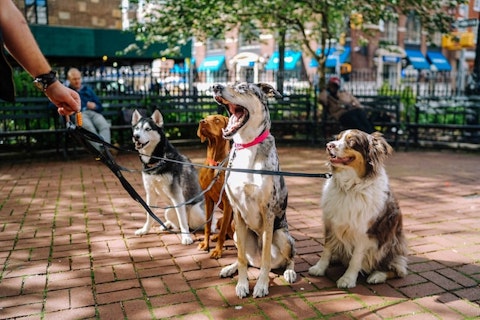
Photo by Matt Nelson on Unsplash
Timothy Cofer: Thanks, Friederike. And good afternoon, everyone. Thank you for joining our Q4 and fiscal year 2022 earnings call. Let me begin the call with three key messages. First, Central delivered solid fiscal 2022 results in a challenging environment, characterized by poor weather during the peak garden season, high inflation across key commodities, freight and labor, evolving consumer behavior and unfavorable retailer inventory dynamics, all of which manifested more prominently in the second half of our fiscal year. And despite these headwinds, we grew net sales, gross margin, operating income and earnings per share. And we exceeded the guidance we provided earlier in the year. Second, while the near term economic outlook remains volatile and likely unfavorable, we remain confident in the macro trends that support pet and garden industry growth, the competitive strength of Central and our Central-to-home strategy as the roadmap to capture profitable growth in the years ahead.
And third, as we look to fiscal 2023, we’re following a prudent approach to guidance. Our guidance of $2.60 to $2.80 reflects that approach, considering ongoing economic uncertainty, continued cost inflation, unfavorable retailer inventory dynamics, and evolving consumer spending patterns. Our outlook also reflects our belief in the strong fundamentals of our company and the resilience of our industries. In this environment, we are taking additional steps to control what we can control, including a sharper focus on our cost and cash agenda in fiscal 2023 as we continue to make thoughtful investments to fortify our foundation. Now before I provide more color on our results, it’s important for me to recognize our 7,000 colleagues across our great company.
Thanks to their hard work and dedication, we delivered steady results in a difficult year and continued to make meaningful progress on our Central-to-home strategy. Thank you, team Central. Turning now to our financial results. Net sales increased 1% versus prior year and are 40% above pre-pandemic levels on a three-year stack with a 12% compound annual growth rate or CAGR. Our strong top line growth over the past three years is a combination of both organic growth and the contributions from our recent acquisitions. Our focus on managing gross margin has also paid off. This year, we encountered unprecedented inflation, more than a quarter billion dollars across commodities, freight and labor. In the face of those challenges, our teams executed a smart pricing agenda, achieved favorable product mix and delivered meaningful productivity, driving gross margin expansion by 30 basis points versus prior year and above pre-pandemic levels.
Our operating income grew 2% versus prior year, given net sales growth and gross margin expansion, offset by a 20 basis points increase in SG&A due to both higher logistics cost and continued investment in building key capabilities aligned to our strategy. Operating income is now $108 million higher than in 2019, translating into a 20% three year CAGR. And finally, earnings per share grew $0.05 versus prior year and came in above our June guidance of $2.75 or better. EPS has now increased $1.19 since the COVID outbreak, with a 20% three year CAGR. As we look back over the headwinds and tailwinds of the last three years, we feel good about our performance. Let me now share some color on our two segments, in particular as it relates to our sales growth and trends across consumers and customers.
Let’s start with Garden. In 2022, poor weather during the peak garden season, as well as economic uncertainty, impacted consumer garden spending, leading to foot traffic declines in most retail channels. In addition, many of our retail partners signaled excess inventory concerns across all aisles, leading to an unexpected slowdown in inventory selling in the second half of the fiscal year. As it relates to the consumer, unsurprisingly, following two years of strong growth, with more than 18 million new gardeners entering the category, we have seen that number erode. And yet, we estimate that two-thirds of the new households are still engaged in the category, which bodes well for future growth. All of these factors contributed to a 7% decline in organic garden net sales.
Driven by recent acquisitions, total garden net sales increased 4% versus prior year. Importantly, our consumption or POS has outperformed our net sales throughout fiscal 2022. This indicates that consumers remain engaged in the garden categories despite the unfavorable conditions. In addition to evolving consumer behavior, we’ve also discussed during past calls, challenges in our customer fill rates over the last two years, given supply chain disruption. Thanks to our investments in capacity expansion and automation and the focus of our Garden team, our garden service levels have significantly improved and are now consistently in the high 90s. From a competitive perspective, we’re pleased with our market share performance. We grew share in two key categories, wild bird and grass seed.
These share gains were driven by strong innovation and promotional activity, including the successful launch of Pennington smart patch. Smart patch not only drove substantial gains in the patch and repair segment, but also supported share growth in the entire grass seed category in fiscal 2022. While we’re keeping a close eye on the potential consumer shift to value and private label offerings, our branded business continues to outperform private label sales and consumption across a number of key categories. Our garden ecommerce business grew 9%, and now accounts for mid-single digits of total garden sales. We grew market share on a large pure play etailer across our portfolio and return on ad spend improved by double digits on both omni channel and pure play customers.
Our efforts to strengthen talent, capabilities and investment in this critical high growth channel are manifesting in these strong ecommerce results. Turning now to Pet. Much like the Garden segment, the Pet segment has seen some deceleration. For the year, our Pet segment sales declined 1%, unfavorably impacted by SKU rationalization and the purposeful exit of low profit private label product lines. Excluding that impact, Pet sales would have grown versus prior year. Looking at the product mix in Pet, we’re seeing a divergence of consumption trends between durables and consumables. Durables are more closely aligned with new pets. Think about a Kaytee guinea pig habitat or an Aqueon fish tank. And most durables have higher price points than consumables.
In line with the slowdown in pet adoptions, durables have experienced a decline. However, consumables continue to grow at a healthy rate, and pet supplies household penetration remains well above pre-pandemic levels. Similar to what I shared in Garden, our branded pet business is outperforming private label. This underscores the importance of building and growing brands that consumers love, especially in times of uncertainty. Nevertheless, given the persistent inflationary environment, we continue to monitor consumer spending patterns, including the potential migration to value segments and private label. Competitively, we’re pleased with our market share performance in Pet. We held or gained market share in small animal, equine and dog treats.
Online shopping and pet is here to stay and continues to grow much faster than brick and mortar retail. Our Pet ecommerce business grew 10% and now represents 22% of total Pet, thanks to improved ecommerce fill rates and a double-digit increase in digital marketing ROIs. A testament to our strength in ecommerce is our recent market share growth at a leading pure play etailer where we grew market share in aquatics, small animal, pet bird, equine and pet beds. Our strong pet ecommerce performance is a result of our strategic investments into digital talent and capabilities. Shifting now to our longer term outlook. As I mentioned, we remain confident in the fundamental trends that support growth in the pet and garden industries and will benefit our businesses for years to come.
Some of these trends include rural revitalization. A larger portion of the population now lives either full time or part time outside of cities and in more suburban or rural areas. This is a tailwind for both pet and garden as people have more space for larger lawn and gardens and more room for their pets. Hybrid work environments. The pandemic fundamentally disrupted the office-centric model, a change that we believe has staying power. As a result, more people are working from home, at least part of the time. And that allows for greater opportunities to garden or engage with their pets. Millennials and Gen Z, more than half of the nation’s total population was born after 1981, making them members of the millennial generation or younger. We see strong evidence that these younger consumers are adopting pet parenting and the love of lawn and garden activities at a rate above their Boomer and Gen X parents.
And they’re spending more on those activities. Sustainability. Consumers, especially younger consumers, are increasingly passionate about sustainability. And they’re voting with their dollars to support brands that embody those values. This provides fertile ground for innovation across all of our categories. And for our part, we’re making sustainability a core consideration in our new product development pipeline. Digital Revolution. The ways consumers build brand affinity, source knowledge, and in particular how they shop has changed materially in the last few years. ecommerce, online and omni channel shopping are here to stay, growing at a rate well above brick and mortar shopping. In fact, 80% of the US population shops online and more than half of US consumers prefer online shopping over in person.
This is why ecommerce and digital marketing excellence are such important elements of our Central-to-home strategy. On the pet side, both humanization and premiumization are significant category tailwinds for the pet industry, supporting higher price points and broader innovation opportunities as consumers are prepared to spend more on pet supplies, especially products that support the wellbeing of their furry, feathery and scaly members of the family. Our Central-to-home strategy is focused on leveraging these favorable industry trends and building capabilities to fortify our competitive advantages over the long term. Let me now give you a brief progress update on our strategy in action. First, on our consumer pillar. Our consumer agenda has advanced materially in the last 12 to 18 months.
This includes the addition of great new talent and progress on consumer growth capabilities, which includes building distinctive brands, creating disruptive innovation, and driving digital marketing excellence. For example, we saw a promising early marketing campaign results driving accelerated growth and share gains across several brands. With our Pennington Smart from the Start campaign, we doubled our impressions, while driving lower cost per impression and significantly higher engagement rates. This new campaign supported the launch of our Pennington smart patch product, which, as I previously mentioned, drove strong market share growth in the grass seed category. On the Pet side, our Kaytee all for the small campaign improved digital engagement rates 10 times versus historic levels and helped double ROIs during the campaign.
This contributed to strong market share growth in small animal. Recognizing a need to better understand consumers, we’ve reframed our approach to creating innovation pipeline and getting products to market faster. As an example, we launched our new pet supplements brand, GoodGood, in less than 16 months. Our Nylabone gourmet chew toys were selected as a finalist in the 2022 Pet Product News Editor’s Choice Awards, and one chew toy Product of the Year in 2022 Pet Independent Innovation Awards. In addition, our Kaytee NutriSoft pet bird food also won bird food product of the year. Shifting to our Central pillar. We’re proud to have launched our inaugural Impact Report. This report is framed around our sustainability strategy and showcases a range of initiatives and their positive impact across our business units.
We outlined three key priorities, protecting our planet, cultivating our communities and empowering our employees and our goals in 10 key areas ranging from waste, water and biodiversity to philanthropy and employee volunteering to diversity and inclusion and learning and development. I encourage you to review this report, which provides some great examples of our team’s passionate work to advanced sustainability. One of these examples is our Nylabone dog and cat business, which commissioned rooftop solar panels, mitigating hundreds of thousands of pounds of greenhouse gases. And in our outdoor cushions business, we converted millions of pounds of ocean bound plastics into our Oceantex branded fabrics. Another recent example of our sustainability efforts in action was the recognition of our Bell Nursery team as Environmental Partner of the Year by the Home Depot.
Each year, only one vendor across the entire store is awarded this prestigious accolade. And it was a great honor for me to join our Live Goods team in Atlanta, and celebrate the award at the Annual Home Depot Supplier Summit earlier this month. While we acknowledge we’re early in our sustainability journey, were driven by our desire to do more, and we will continue to make meaningful advancements against our impact strategy in the years ahead. Turning to our cost pillar. Given the continued inflationary environment and difficult economic outlook, we’re focused even more on our cost reduction agenda to build margins and fuel growth. Since the beginning of the pandemic, we’ve simplified our portfolio by eliminating thousands of SKUs, shifted some of our wild bird and garden controls production from coal manufacturers to our own plans, and invested in automation to drive improved efficiency in many of our businesses, including dog and cat treats and toys, aquatics, grass seed and bird feed.
Looking forward to fiscal 2023, we’re doubling down on our efforts to manage costs, given the uncertain economic environment. This includes a deliberate pause in hiring and filling open salaried positions and reducing travel expenses. In addition, we are currently developing a more robust cost out agenda to simplify our supply chain network, rationalize our overall footprint and better leverage our scale. These supply chain simplification efforts are expected to yield fruit in fiscal 2024 and beyond and make us leaner and stronger exiting the COVID years. We’ll share more in the coming months as we firm up our longer term plans to improve margins and create fuel for growth. So, to summarize, I want to reiterate that we remain confident in the fundamental trends that support garden and pet industry growth, the competitive strength of Central and our Central-to-home strategy.
While fiscal 2023 will be challenging, I’m confident our team can navigate the short term while building for the long term. And with that, let me turn it over to Niko.
See also 11 Biggest Music Festivals in the World and 15 Most Advanced Countries in Education.
Nicholas Lahanas : Thank you, Tim. Good afternoon, everyone. Building on Tim’s remarks, I’m pleased to share with you the details of our fiscal 2022 results and our outlook for fiscal 2023. First, let me start with fiscal 2022. Net sales increased 1% to $3.3 billion. Growth was primarily driven by our recent acquisitions, contributing $147 million of inorganic sales to the year, offsetting an organic decline of $108 million. Gross profit for the year increased 2% to $992 million. As Tim mentioned, we’re very pleased that gross margin increased by 30 basis points to 29.7%. The increase was driven by significant pricing actions across our portfolio, in addition to the favorable impact of our fiscal 2021 acquisitions, gross productivity initiatives, and favorable product mix, which offset the unprecedented inflationary headwinds.
SG&A increased 2% to $732 million and 20 basis points to 21.9% as a percentage of net sales. Operating income for the year increased 2% to $260 million and our operating margin grew 10 basis points despite higher logistics costs and investment behind our brands. Other expense was $3.6 million compared to $1.5 million in the prior year, primarily driven by foreign currency losses. Net interest expense was in line with the prior year at $58 million. Our net income was $152 million, in line with a year ago, and diluted EPS came in at $2.80 a share. As Tim mentioned, $0.05 over the prior year and above our June 2022 guidance. Adjusted EBITDA for the year increased 4% to $367 million, driven by higher operating income and increased depreciation and amortization.
Our tax rate for the year increased 160 basis points to 23.2% as we had a lower benefit from stock compensation versus prior year. Now turning to consolidated financials for the quarter. Fourth quarter net sales were $707 million, down 4% versus prior year. Gross profit for the quarter declined 6% to $200 million and gross margin declined 60 basis points to 28.2% as the favorable impact of our pricing actions, gross productivity efforts and favorable product mix was more than offset by substantial inflation in key commodities and labor. Several of our businesses have taken further pricing actions in fiscal 2022 that will take effect in Q1 and fiscal 2023. SG&A expense for the quarter decreased 8% to $187 million. SG&A, as a percentage of net sales, was down 110 basis points to 26.4% as we’re lapping higher investment spend behind some of our brands in the prior year.
Operating income for the quarter was $13 million compared to $10 million a year ago, and operating margin increased 50 basis points to 1.8%. Net interest expense of $14 million was in line with prior year. Net loss for the quarter was $2 million and diluted loss per share was $0.04 compared to diluted loss per share of $0.06 in the fourth quarter last year. Shares outstanding decreased to 54 million from 55 million in the prior year. We bought back approximately 495,000 shares for roughly $20 million. Now I will provide some insights into the segments, starting with Pet. Pet net sales for the fourth quarter decreased 4% to $440 million, unfavorably impacted by SKU rationalization and the purposeful exit of low profit private label product lines.
Looking over a three year period, Pet net sales in the fourth quarter grew at a 7% CAGR. Operating income for the pet segment was $40 million, an increase of 28%. Operating margin as a percentage of net sales increased 230 basis points to 9.2%. The increase was driven primarily by lower commercial expense and variable compensation as well as pricing actions. Pet adjusted EBITDA increased 21% to $50 million. Moving to Garden. For the quarter, Garden net sales decreased 4% to $268 million due to softness across most of the garden portfolio, except for continued strength in wild bird, packet seeds and grass seed. Looking over a three year period, Garden net sales in the fourth quarter grew at a 14% CAGR. Garden segment’s operating income for the quarter was $1.8 million, up from $1.1 million in the prior-year quarter.
And operating margin as a percentage of net sales increased 30 basis points to 0.7%, driven by lower variable compensation versus prior year. Garden adjusted EBITDA was $12 million, in line with the prior year. Now turning to the balance sheet and cash flows. On the cash flow side, cash used by operations was $34 million for fiscal 2022 versus cash provided by operations of $251 million in the prior year. The increase in cash used by operations was largely due to changes in working capital, primarily due to higher costs of inventory and our decision to maintain adequate levels of inventory to mitigate supply chain challenges. CapEx for the year was $115 million, an increase of 43% over the prior year, reflecting our heightened focus on capacity expansion and automation and the purchase of a live plants growing facility in Paris, Kentucky to support our long term organic growth.
Depreciation and amortization was $81 million for the year, up from $75 million in fiscal 2021. Cash and equivalents, including short term investments, were $177 million compared to $426 million a year ago. Total debt was $1.2 billion, in line with a year ago. We ended the quarter with a leverage ratio of 2.9 times compared to 3 times a year ago, well in line with our range of 3 to 3.5 times. We had no borrowings under our $750 million ABL line at the end of the year. Given our financial strength, we remain on the lookout for high growth opportunities with accretive margins in both Pet and Garden to build scale in core categories and our adjacent categories and add key capabilities, for example, around ecommerce. Now turning to our fiscal 2023 outlook.
For fiscal 2023, we anticipate ongoing broad based inflation. We continue to work with our retail partners to offset these increases with pricing, in addition to improving productivity across Central. As prices further increase in fiscal 2023, we anticipate that consumers may adjust their buying patterns and buy fewer units or otherwise reduce their spending. As we look at CapEx, we are planning to invest significantly less than in the prior year, in line with our sharpened focus on cost and cash. We currently plan for CapEx in the range of $70 million to $80 million, the majority of which is carryover and requires maintenance. We are significantly increasing our focus on cost and cash, including simplifying our manufacturing network, rationalizing overall footprint, leveraging our scale, and converting inventories into cash.
And as Tim said, we are deliberately pausing the hiring and filling of open salaried positions and are reducing travel expenses. Nevertheless, we remain committed to our Central-to-home strategy as it relates to our consumer growth agenda. However, in light of the uncertain economic backdrop, we’re taking a more deliberate approach to build out our digital marketing, brand building and innovation to drive profitable long term organic growth. Lastly, we expect a tax rate similar to that of 2022, in the range of 22% to 24%. All said, as Tim indicated, we are taking a prudent approach to fiscal year 2023 guidance, and currently expect GAAP EPS for the year to be in the range of $2.60 to $2.80. We are taking into account the ongoing economic uncertainty, continued cost inflation, unfavorable retailer inventory dynamics, as well as changing consumer preferences as they are adjusting to the increased cost of living pressures.
Our guidance also reflects our belief in the strong fundamentals of Central and the pet and garden industries. Consumers remain engaged in our categories, as demonstrated by our POS consumption trends that have been consistently stronger than our shipments in both Garden and Pet. This gives us confidence in our full-year guide, which is skewed to the back half. As always, our outlook excludes any impact from acquisitions undertaken during the year. Now, as we look forward to the first quarter of fiscal 2023, I want to remind you that Q1 is typically one of our smallest quarters. It is also important to point out that EPS in Q1 last year was the second highest Q1 EPS on record. As we shared with you before, the poor weather had a negative impact on our Garden business in Q3 and Q4, and retailers adjusted their inventory, leaving us with higher inventory entering fiscal 2023.
And we will be working through these higher cost inventories as we progress through the year. For example, much lighter volume in our live plants business resulted in unabsorbed overhead, which will have a negative impact on our cost structure in Q1. In addition, we’re expecting softness across our pet business in Q1 due to retailer destocking. Finally, our fiscal Q1 ends earlier on the calendar than last year, which impacts the timing of shipments from Q1 into Q2. Considering all these factors, and in particular the strong prior year quarter, we expect Q1 GAAP EPS to come in below the prior year, in the range of a $0.15 to $0.20 loss for the quarter. To summarize, 2022 was a challenging year for all of us. Nevertheless, Central delivered solid financial results.
Our company remains strong, well-capitalized and well positioned to grow both organically and through acquisitions in the years ahead. And with that, I’d like to open the line for questions.
Q&A Session
Follow Central Garden & Pet Co (NASDAQ:CENT)
Follow Central Garden & Pet Co (NASDAQ:CENT)
Operator: . And our first question comes from the line of Brad Thomas with KeyBanc Capital Markets.
Bradley Thomas: A couple of quick ones on the outlook for guidance here for the full year. first, I was hoping, Niko, and Tim, you could give us a little bit of flavor for what kind of sales outlook is embedded into that $2.60 to $2.80 range for earnings and how you’re thinking about revenues at a high level?
Nicholas Lahanas: Well, I think you’ve got to go back to our algorithm, is kind of where we go back to, to a more normalized environment. As we looked out at both businesses, we always go into the year, for instance, in Garden, assuming a more normal weather year. And so, where we came out was kind of low-single digit growth into 2023. So that’s sort of the way we’re looking at it. Other things that went into the thinking there is and again, this comes back to the uncertainty, which is we do still have to take some price going into 2023, probably about a third of what we have slated, we still need to get. It’s not been approved. So that’s sort of an area of risk for us. The other piece is, weather always is a wildcard there.
And then, we also have to look at how the consumer is going to react. This would be a second year of pretty aggressive pricing to cover off inflation. And then we have to see how really the elasticity plays out and how the units are going to are going to play out. If you look at Q4, our units were down and the gross margin showed that. And then, again, in Q1, we’re starting to see a little bit of that going on as well. So, with lower units comes also higher conversion costs because we’re having to absorb more overhead.
Bradley Thomas: Just a follow-up, sort of dovetailing off of that, I think, Niko, you had mentioned that this is another quarter where the data you have about POS trends has been stronger than your revenues. Can you just talk a little bit more there about when you think maybe your largest retail partners will be a little bit more at the end stock levels than they should be? And then, what steps you go through to get rid of some of this inventory that you said you have to work through? Can you do that just through your normal partners? Or do you have to do different measures right now?
Nicholas Lahanas: I’ll kick off the answer and then I’ll let you know JD and John talk about Garden and Pet respectively. I think, overall, we’re seeing the destocking pretty aggressively here into Q1 on the Pet side continue. And they really want to lower their inventories quite dramatically. In some cases, they were sitting at, call it, 14 to 16 weeks, and they want to be down to 4 to 6. So, it’s going to take a little bit of time. We don’t see really the reason to go and unload inventory into discount channels or anything like that. Most of our inventory keeps pretty long. Most of it is fairly commodity based. So what I mean by that, non-fashion, so it’s not going out of style. So, there’s no need for us to kind of hit the panic button and liquidate.
The other thing too is, if you look at our inventory levels, the vast majority of where we’re over inventory is on the garden side. And we want to see how the season plays out. So we’re going to push hard into and have a great garden season and convert that inventory into cash. That’s going to be a real emphasis and we’re measuring that every month.
Operator: Our next question comes from the line of Stefanos Crist with CJS Securities.
